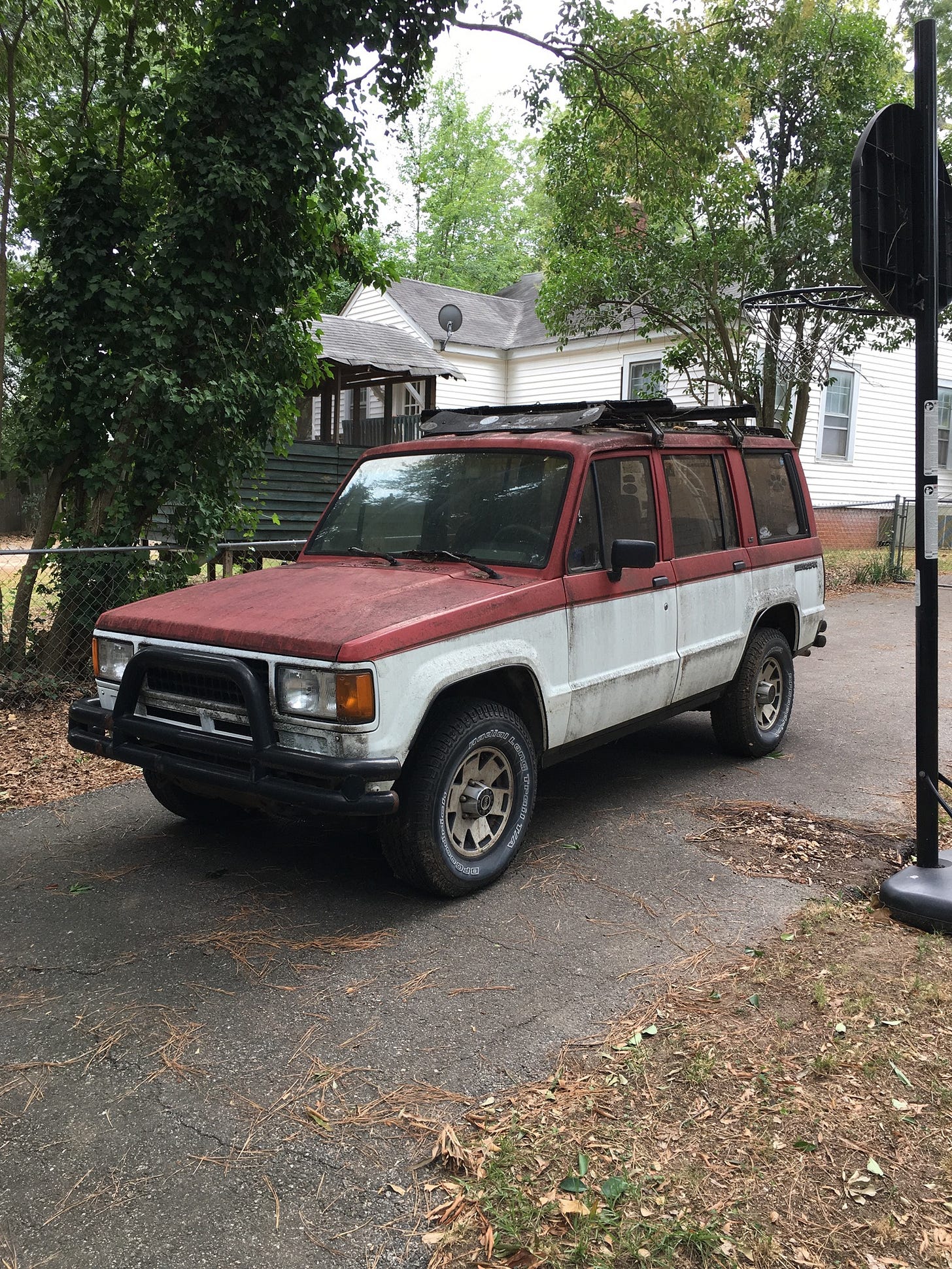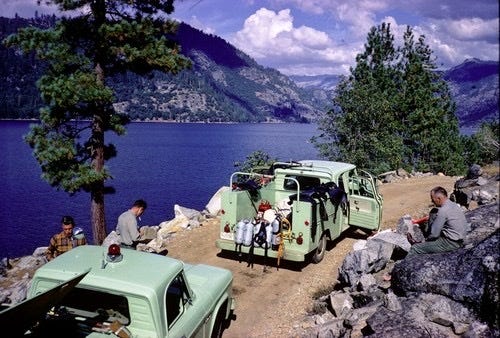For the last year, My dad and I have been passing around an idea. It started one day when I was reading and came upon the term “Diving Support Vessel,” or DSV. Normally, it refers to a ship used as a base for commercial diving operations. More extreme examples even feature ROVs and other gizmos. The idea came soon after — what would the terrestrial equivalent look like? Thus the birth of the Dive Support Vehicle, a vehicle used by the diver to conduct those important diving operations.
We’ve been sending options back and forth whenever we see them since. While I should note that I am not currently in the market for new transportation, that has not stopped me from looking. After all, when the time comes I want to be prepared. At its core the ideal DSV would need to be a few things:
Spacious enough to carry both dive gear and divers from points A to B
Allows the operator(s) to reach semi-remote destinations over unsteady terrain, making four-wheel drive useful
Reliable enough to make road trips of considerable distances (say 200+ miles), and, perhaps most of all, it must be
Cool
There are multiple easy solutions to this problem available—new!— today. Pedestrian Pilots, RAV4s, CRVs, Mavericks, and Outbacks are wonderful options. Likewise, your 4Runners, Land Cruisers, Rangers, Broncos, Wranglers, and Gladiators are also incredibly competent choices. New and arrayed with a dazzling assortment of gadgets, these are wonderful for a diver looking to get from one place to another with ease.
And yet they land flat. For a while, the feeling was difficult to place. But that intangible factor, that resistance to choosing one or the other, finally became clear — they lack romance. They make the job too easy. And, if we’re being frank, the most rugged terrain my DSV is ever likely to see is a quarry. (In my defense, some of these quarries are, shall we say, unpleasant to get into in a sedan. See Criteria No. 4.)
When confronted with a choice between the practical and the impractical, I will nearly always choose the impractical. Call it a character flaw, call it a reactionist streak, or call it simple stubbornness, I remain, unabashedly, a romantic, practicality be damned. No, the ideal DSV requires taking that blueprint and looking back. After all, the motto here at SEA-VUE is “Diving Into the Past.” The platonic ideal of the DSV belongs to that category of vintage 4x4s. So far I’ve had a few ideas:
Mitsubishi Montero
Isuzu Trooper
Jeep CJ3-5
Land Rover Series
Toyota Land Cruiser FJ40
One criterion, that is a want, but not a have, is that I’d like to be able to remove the roof. I used to have a little roadster and have missed that experience ever since. A point from the Montero and Trooper. Yet the Trooper remains in my conscience for no better reason than what I might call nostalgia. You see, a 1988 Trooper II was my very first car. Arrayed with a dazzling assortment of nicknames — “The Box,” “The Tank,” and so on — its distinctive red and white paint remains bright within my memory.

Budgetary constraints also all but remove the Land Rover, leaving the Jeep and Toyota to duke it out. The Toyota offers similar features to a comparable Land Rover and has the benefit of being a larger platform. They’ve got great style, but I can’t help but feel as though I’d prefer the English counterpart. Call it a semi-suppressed Anglophilia. That leaves the Jeep. There’s no way around it — these old things are small. This poses some potential problems that can be avoided by smart packing.
There is, of course, an option that would combine many of these features with some of these charms from the past — a TJ Wrangler. It’s undoubtedly the best While the newer Jeep would undoubtedly be the best vehicle from this list, that aforementioned stubborn streak has me feeling lukewarm towards it. Some days I’m browsing listings for them, others I scoff at the very idea. I know that it’s likely the best option overall. Certainly the most highway capable of the group. At the time, however, something feels off. Maybe embracing the inconvenience is an essential part of the adventure. Then again, it’s easy to say that when I know I’ll have the option of using my dive buddy’s modern DSV when the occasion arises.
I’m at an impasse. Luckily, I’m in no hurry to decide. And besides — this is all an exercise. The real answer is that a DSV is whatever it takes to get you to the dive site and back. When the chance comes, though, I know I’ll do it the hard way. What do you think? Tell me about what shape your ideal DSV would take. I look forward to hearing from you.



Thoroughly enjoyed this post! Montero all day! It just won't look right if you're pulling vintage dive gear out of an everyday SUV. It needs to be a little funky.
4x4 Sprinter van, complete with bunks and a compressor!